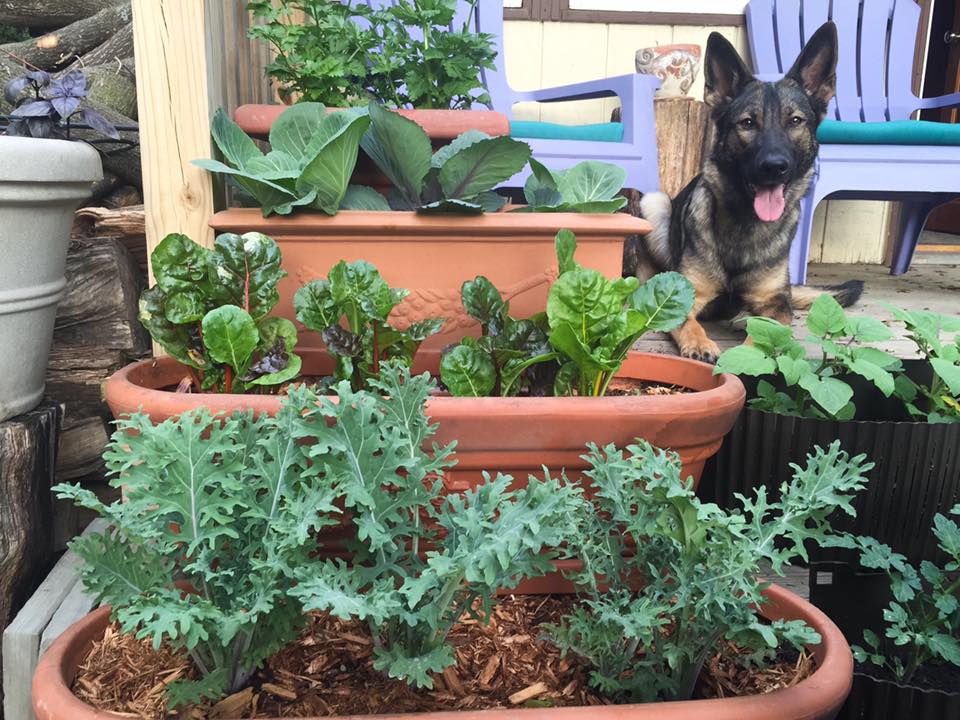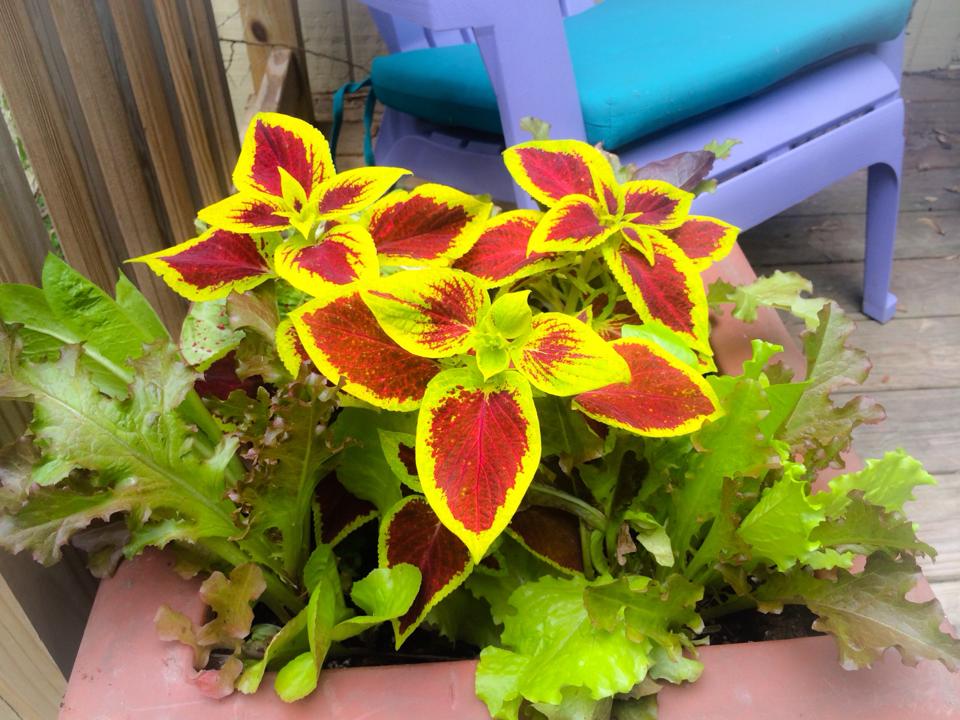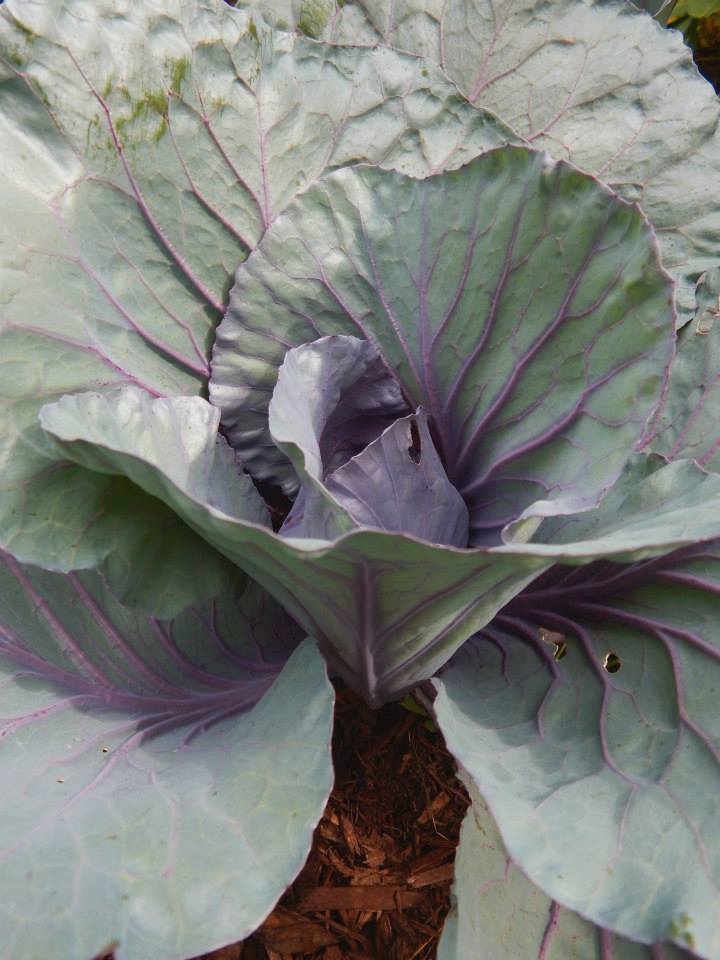





Tastefully Adding Edible Plants into Your Landscape
Any spot in your yard that has enough sun for lawn to thrive can also support small fruits (raspberries, currants & more!), herbs, and veggies.
I’ll say it louder for the people in the back: if it’s sunny enough for turf grass, it’s sunny enough to grow some food.
I can hear some of you cringing from across the great wide internet, picturing a neglected rectangular scar on an otherwise-orderly suburban yard. The stereotypical ugly garden rectangle: frequently bordered with a short & crooked fence, often slightly off square, and plunked randomly in the middle of an otherwise attractive landscape or in the middle of the sacred, manicured lawn. Whether inherited from a previous owner, or dug up on Earth Day years ago during a caffeinated wave of good intentions, these random rectangles build resentment and they aren’t very forgiving if you decide to skip a year growing veggies.
Instead of the dreaded rectangle, try something new: rethink your garden and tuck those edible plants into nooks and crannies throughout your landscape. The lettuce will taste just as good planted in an artful circle around a tree as it would planted in straight rows in a straight grid. The morning glories growing up your lamp post can be replaced for a year with scarlet runner beans. Some plants like radishes and salad greens mature so rapidly you can grow 3-4 crops in a single season (!) in a tiny space, tucked between your ornamental shrubs and perennials.
Not All Edibles Are Ugly. Put the pretty ones front and center.
Our “Consistently Pretty” List in Southern Wisconsin: Peppers, Eggplant, Kale, Sage, Bean varieties with beautiful flower color (Scarlet Runner, Dragon Tongue, etc), compact “patio” style Tomato varieties with good blight resistance. These attractive plants can be featured in containers, tucked into ornamental perennial beds, and showcased along your front porch or around a prominent tree or lamp post.
Hide the Uglies. Some of the tastiest plants are ugly, and there’s no way around it. Don’t plant the uglies by your front door, and don’t plant them where they will sprawl over your fastidious neighbor’s lot line.
Our “Almost Always Ugly” List in Southern Wisconsin: Full size, vining Tomato varieties. Even though we love them dearly, it’s very difficult to grow, stake, and tie up large tomato varieties without turning them into an eyesore. Don’t grow your huge tomatoes by the front door unless you’re a hopeless tomato addict ready to defend your choices to your neighbors. Some herbs, when tall, resemble weeds and are perceived as ugly – especially dill.
Be Ruthless When the Uglies Strike.
Mildew, black spots, and defoliation in late summer can turn your lush vines into ugly rattails. Some types of mildew and fungal problems can be prevented or greatly reduced by keeping your plants clean and protected, but there are times in every gardener’s life when blight or mildew win the war.
When appearances matter: When mildew is winning, or your vegetable is so ugly it’s detracting from its neighboring plants, be ready to harvest all the fruit and yank the whole vine out. These newly void spaces can then be filled with a fresh and attractive late season fall crop of peas, kale, or salad greens. Some plants, such as zucchini, will tolerate it if you ruthlessly chop off mildew-covered leaves, and they will rebound with fresh new growth and continue fruit production.
Our “Prone to Turning Ugly” List in Southern Wisconsin: Cucumbers, Tomatoes (specifically those varieties prone to early and late blight), and Summer/Winter Squash (mildews and/or vine borer). Potato plants start out pretty, but before harvest time the vines tend to shrivel up and fall over – don’t put your potatoes front and center unless you want your judgmental neighbors to think you’re diligently weeding dead plants.
Grape vines can also fall into this category if Japanese Beetles cause significant damage – but grape vines (of course!) cannot be ripped out. For this reason, we suggest either protecting your grape vines against beetle damage, or locating your vines in a portion of the yard where some late summer/early fall ugliness isn’t a concern.
Be Flexible. Try new things, but also: don’t be afraid to scale back! This should be FUN! If you have a summer coming up with with three weddings, four graduations, and five vacations – fill those edible niches in your landscape with simple, hardy annual flowers and let the bees and butterflies feast for the summer. The following year when things settle down, you can go back to your edible gardening.
Flexibility is one of the biggest advantages of tucking edible plants throughout your landscape instead of lining them all out in one big awkward rectangle: your neighbors won’t notice the empty rectangle and judge you if you skip a year. Chances are, the only people who will notice are the ones saddened because you aren’t sharing your harvest with them.
Change Minds. We’re already seeing fresh perspectives and an appreciation for unconventional, 21st century edible gardening evolve in the Midwest. Heirloom vegetable varieties that have ornamental qualities are more readily available, and as demand grows, we’ll see this increase even more. If your neighbor asks why the heck you’re growing beans up the mailbox instead of morning glories, try giving them a fresh-picked bowl to try. Be creative with your plant choices, but be respectful of your neighbors: don’t plant mint where it can escape and colonize the whole subdivision, clean up any fallen or spoiled fruit, and don’t let your plants make messes in your neighbor’s yard or on the public sidewalk. SHARE your tasty harvest, expect some questions, and have FUN being part of the new age victory garden movement.
Don’t Fix What Ain’t Broke!
If you love your rectangular vegetable garden, we love it too. Keep on truckin’!
Recommended Reading:
“The Edible Front Yard”, Ivette Soler. A wealth of how-to, with an eye toward style and new ideas.
“Fresh Food from Small Spaces”, R.J. Ruppenthal. Even more efficient ideas for growing your own food in tiny spaces – down to square inch gardening.
“Paradise Lot”, Eric Toensmeier & Jonathan Bates. Combination memoir and ideabook, with some great info about using perennial edibles and not just annuals.
Retail Hours
Sun: 10:00am - 3:00pm
Mon: CLOSED
Tue: 9:00am - 6:00pm
Wed: 9:00am - 6:00pm
Thu: 9:00am - 6:00pm
Fri: 9:00am - 6:00pm
Sat: 9:00am - 4:00pm